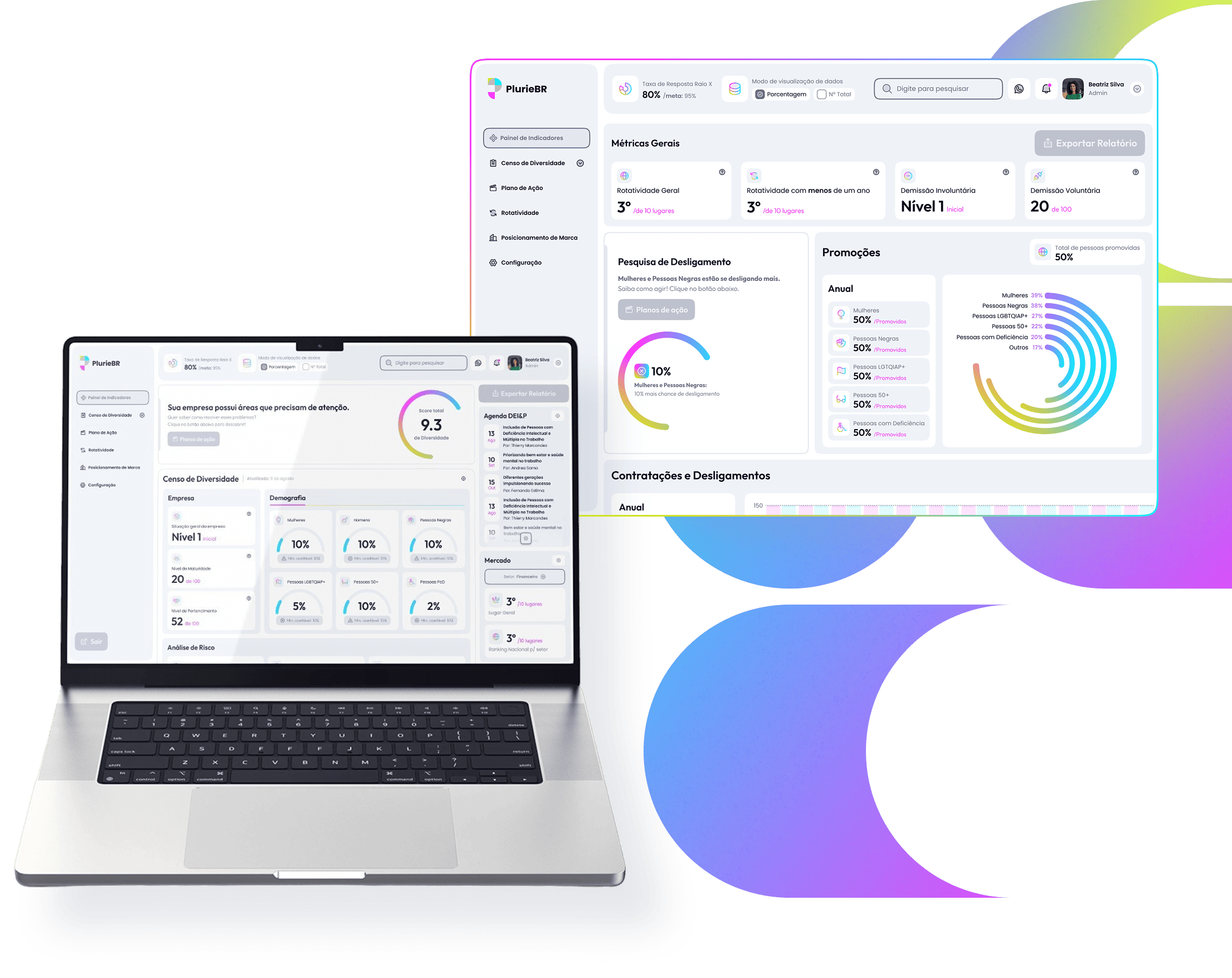
PlurieBR em Portugal: expandindo a gestão de cultura inclusiva para a Europa
Em um cenário em que a sustentabilidade corporativa deixou de ser diferencial para se
Mede. Analisa. Gera Valor.
Do Censo de Diversidade ao cálculo do ROI da inclusão,
transformamos dados em decisões estratégicas,
para fortalecer a cultura e reduzir riscos ESG.

Datas importantes para fortalecer a cultura inclusiva.
Captura dados em tempo real.
Gera diagnósticos precisos para decisões estratégicas.
Mapeia riscos de DEI e ESG.
Identifica seus principais gaps.
Compara seus dados com benchmarks de marcado.
Demonstra o ROI de cada iniciativa.
Acelera a sua cultura organizacional.
Posiciona sua empresa como referência.
Desenhamos nossos módulos e serviços para medir, analisar e gerar valor para sua cultura de inclusão.
Explore a solução ideal para cada etapa da sua jornada.
Descubra em menos de 5 minutos o nível de maturidade em diversidade, equidade, inclusão e pertencimento da sua organização, com um diagnóstico personalizado.
O ponto de partida para decisões mais inclusivas e estratégicas: meça o que realmente importa.
Da medição à inteligência: analise seus dados e descubra os porquês.
Compara a reputação de sua marca com benchmarks de mercado.
Do insight ao impacto: comprove o valor da sua estratégia e posicione sua empresa como líder.
Sua jornada de cultura e inclusão, guiada por especialistas.
Acelere seus resultados com um time qualificado para gerenciar sua estratégia de ponta a ponta, unindo diagnóstico, implementação e acompanhamento.
Levamos a proteção dos seus dados a sério. Nossa plataforma garante total conformidade com a LGPD e os mais altos padrões de segurança.
Padrões de segurança avançados e criptografia de ponta a ponta.
Conformidade com a lei, da coleta ao descarte dos dados.
Trilhas de auditoria completas para total transparência e controle.
Gestão e controle total sobre suas informações críticas de inclusão.
Com um NPS de 90, o feedback é claro: estamos fazendo a diferença!




Em um cenário em que a sustentabilidade corporativa deixou de ser diferencial para se

O segundo semestre é decisivo para transformar a cultura de inclusão em resultados de

Baixe grátis o Calendário de Diversidade 2025
Seu recurso para transformar datas em cultura e pertencimento.
A PlurieBR é uma plataforma de dados voltada para a gestão de Diversidade, Equidade, Inclusão e Pertencimento (DEIP). Entregamos diagnósticos, indicadores e recomendações personalizadas para empresas em diferentes níveis de maturidade.
Coletamos dados fornecidos voluntariamente por colaboradores, dados agregados de RH e informações públicas sobre percepção da marca. Tudo é processado de forma ética, segura e anônima.
Sim. A contratação é personalizada e adaptável à realidade e às prioridades da sua empresa. Você pode contratar módulos isolados ou a plataforma completa.
A PlurieBR segue rigorosos padrões de LGPD. Nenhum dado individual é exposto, e todas as informações são tratadas de forma agregada, com painéis e relatórios construídos para proteger a identidade das pessoas.
Você pode começar realizando o nosso Teste de Maturidade DEIP. Ele mostra o estágio da sua organização e indica o caminho ideal para evoluir com a PlurieBR.
Sim. Atendemos desde startups até grandes corporações. Nossas entregas são dimensionadas conforme o porte, setor e contexto da sua organização.
Depende do escopo contratado, mas em geral o processo de onboarding dura entre 15 e 30 dias. Nessa fase, oferecemos apoio total na comunicação e engajamento interno.



Preencha o formulário e vamos te ajudar a transformar dados em resultados.
Direto no seu e-mail.